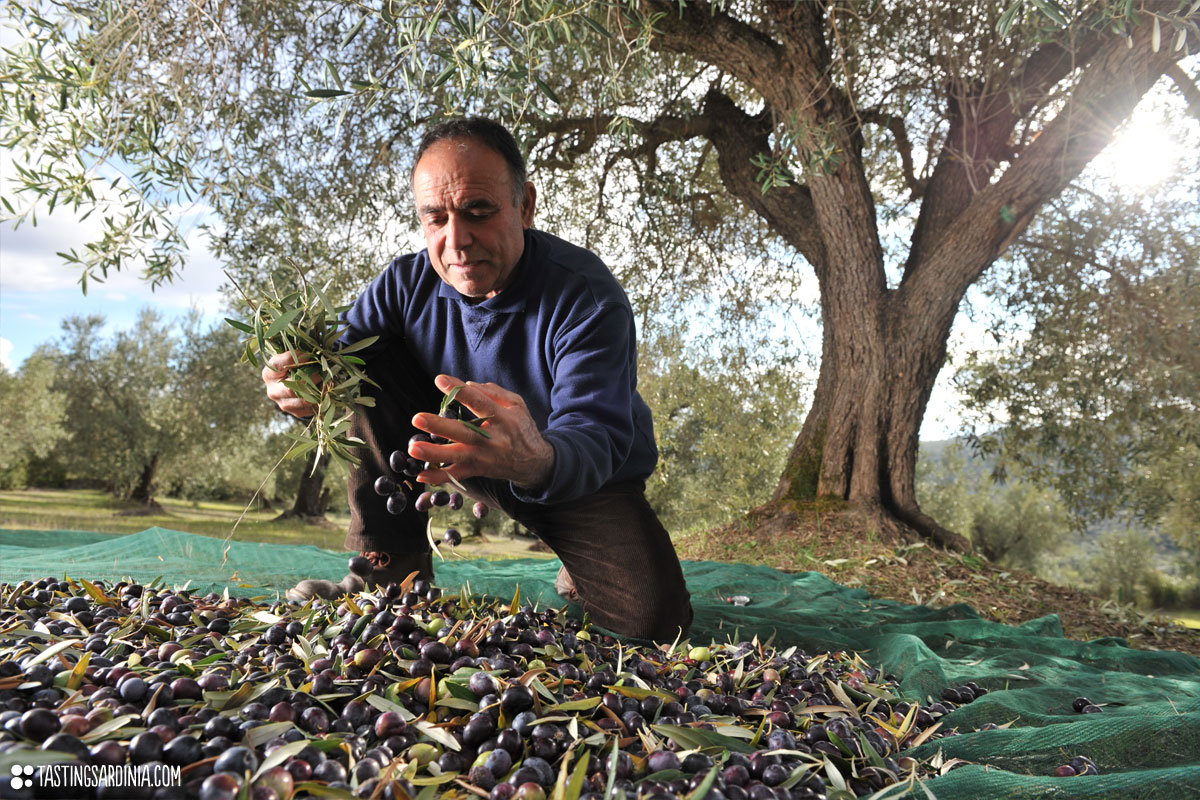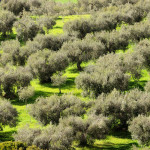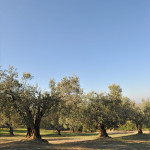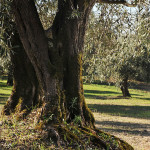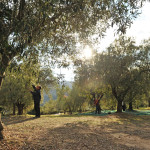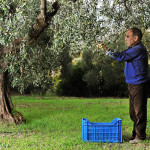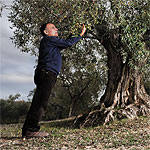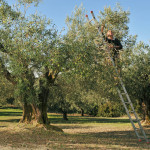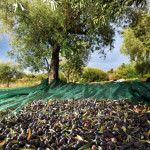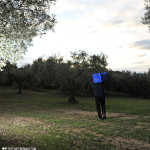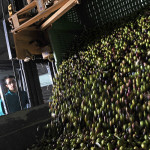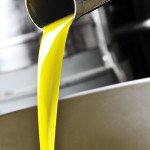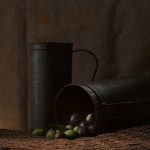4/7 day tour
We lead you into the activities and environment where the olive grows, develops and became our treasure “the extra virgin olive oil”.
In this tour: breathe the cozy character of a stunningly restored traditional abode far from the summer-crammed beaches; pass through culinary tradition to better understand the central Sardinia culture making cooking lessons and market guided tours; learn about the art of making extra virgin olive oil through olive-picking with the farmers, oil tastings, oil mill tours; visit the most impressive Nuraghe of Sardinia the only one included in the UNESCO list of World Heritage Sites; visit the Giara plateau park where you can spot the surviving population of the last natural wild horses living in Europe; visit the workshop of the last Sardinian coppersmith; assist to launeddas private performance, one of the most ancient woodwind instruments simply made out of reed and played with a continuous mouth-blown technique.
- escorted by a local insider;
- max 8 people tour;
- minivan with private driver;
- meals included;
- transfers from/to airport include;
Tell us about your days permanence and we will build your tour.
Most of the olive oil activities led by Tasting Sardinia are held in the Sarcidano area, a patch of land situated right in the centre of the island. Many of us still have bonds in that part of Sardinia and it makes things smooth when it comes to arrange, organize and appreciate everything is related to olive oil.
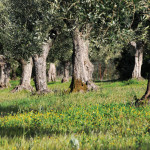 Yes it is true, the Sarcidano region is extraordinarily well suited to growing olives. The features of the product are indissolubly dependent on the peculiar environmental, climatic and geomorphological conditions of this land that even today remains one of the most unspoiled and unchanged among the whole island.
Yes it is true, the Sarcidano region is extraordinarily well suited to growing olives. The features of the product are indissolubly dependent on the peculiar environmental, climatic and geomorphological conditions of this land that even today remains one of the most unspoiled and unchanged among the whole island.
Witness to this statement, the olive oil farms rooted in this area recently achieved reputable awards in the regional and even national circuit. The intense aroma of fruity green olive with hints of fresh grass makes this extra virgin olive oil an irreplaceable guest of your table. The sweet and intense flavour combined with the slightly bitter and pungent taste of artichokes complete the painting.
Sa mola and Corte Olias are two native olive oil producers operating in the Sarcidano area. They both have lately won the prestigious national prize at Vinitaly competition as the best DOP young extra virgin olive oil of Italy. We are enthusiastic to have a collaboration with them as their factories are stronghold of our activities and their precious olive oil the highlight of our experience.
Visit the largest fish market in Europe and tasting
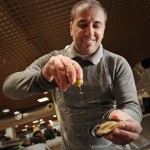 It is a complete and intense experience, if you are a great lover of the good cuisine you are going to love it. Is held at San Benedetto market one of the most fascinating and colourful places in Cagliari. It is considered to be the largest covered fish market in Europe.
It is a complete and intense experience, if you are a great lover of the good cuisine you are going to love it. Is held at San Benedetto market one of the most fascinating and colourful places in Cagliari. It is considered to be the largest covered fish market in Europe.
While strolling the market throughout the shoutings of the characteristics fishmongers that try to communicate with the farthest stall to ask about the remaining species we will get the chance to make a real tasting of the freshest fish on display. Shrimps, see urchins and oysters just to mention a few. We will grab some slices of grey mullet roe, the pricy and well known bottarga with its unmistakable strong flavor or you will have the chance to taste the touching raw mussels just with few drops of lemon on them. On the first floor a huge variety of cheeses from the whole island, especially the pecorino will be waiting for us to be tried, framed with the colours of the vegetables and the fruits of Sardinia.
Cooking lesson: home made pasta
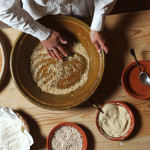 In this lesson you will learn everything you need to know about the Sardinian style and more generally about the Italian pasta tradition.
In this lesson you will learn everything you need to know about the Sardinian style and more generally about the Italian pasta tradition.
You will be taught from the simple and plain pasta to the stuffed one, learning all the tips and tricks to prepare a perfect fresh home made pasta in all its variations.
Pick up olives with local farmers, grind them in a traditional oil mill
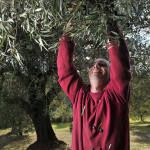 If you come along in the right period, from beginning of October to the end of February you will enjoy a genuine experience on the fields. You will have the opportunity to spend time with the local farmers while gathering the olives. During the experience you will be put side by side with an English speaking local insider to deal with the workers. You will be taught everything about tools and techniques and if you are lucky enough, back to the oil mill, you can attend to the cold pressing while the very fresh green oil is gushing out.
If you come along in the right period, from beginning of October to the end of February you will enjoy a genuine experience on the fields. You will have the opportunity to spend time with the local farmers while gathering the olives. During the experience you will be put side by side with an English speaking local insider to deal with the workers. You will be taught everything about tools and techniques and if you are lucky enough, back to the oil mill, you can attend to the cold pressing while the very fresh green oil is gushing out.
Guided visit to the oil mill
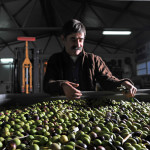 Within the Sarcidano territory there are several oils mills. The one situated in Escolca, a tiny village with almost 500 souls, is the core of our olive oil experience. Being run by the same family for over three generations it will be the perfect setting to understand all the procedures and familiarize yourselves with this fascinating environment. The owners will be more than willing to share their knowledge with you. They will lead the tours starting from the cold pressing with the huge granite millstones to the secrets of storing the precious oil in the right manner.
Within the Sarcidano territory there are several oils mills. The one situated in Escolca, a tiny village with almost 500 souls, is the core of our olive oil experience. Being run by the same family for over three generations it will be the perfect setting to understand all the procedures and familiarize yourselves with this fascinating environment. The owners will be more than willing to share their knowledge with you. They will lead the tours starting from the cold pressing with the huge granite millstones to the secrets of storing the precious oil in the right manner.
Olive oil tasting with an expert
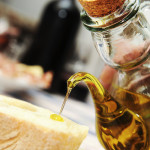 The legitimate place for an olive oil education to start is with a guided tasting. Extra virgin olive oil has been prominent in the news recently, but all this clamour isn’t going to be significant unless you can connect it to the sensory experience, the aroma and taste of olive oil. Professional olive oil tasters will sip the best oils we can offer straight from suitable glasses and will help you learn to recognize characteristics without the complication of other flavours.
The legitimate place for an olive oil education to start is with a guided tasting. Extra virgin olive oil has been prominent in the news recently, but all this clamour isn’t going to be significant unless you can connect it to the sensory experience, the aroma and taste of olive oil. Professional olive oil tasters will sip the best oils we can offer straight from suitable glasses and will help you learn to recognize characteristics without the complication of other flavours.
Cup the glass in one hand and cover it with the other to trap the aromas inside while you warm it up, hold it, swirl it, then stick your nose into the glass and take a good whiff to “trace” that fruity feeling given by the artichokes, grass and herbs notes.
Visit an ethnographic museum
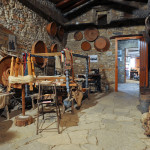 Visit “is Lollasa de is Aiaiusu” (literally the grandparents rooms) an Ethnographic museums of the area where scenes from the day to day country life of the long gone past are represented inside several typical rural houses. Each room are well preserved and furnished with the whole genuine piece of furniture to recreate exactly a XVII century setting.
Visit “is Lollasa de is Aiaiusu” (literally the grandparents rooms) an Ethnographic museums of the area where scenes from the day to day country life of the long gone past are represented inside several typical rural houses. Each room are well preserved and furnished with the whole genuine piece of furniture to recreate exactly a XVII century setting.
The last coppersmith
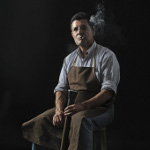 Many mining sites reveal that the copper was mined in Sardinia already during the nuragic civilization (1800 BC). Although there are no systematic studies on the processing of copper in Sardinia, on the bases of the elderly memory of coppersmiths, it can be said there are many involved in this activity, with the occasional presence of people from the peninsula, especially from Calabria and Naples. Some of these figures decide over time to implant themselves in Sardinia, and to open up shops. Isili, a small village in the centre of the island rises as a place of reference for the whole Sardinia. There are many artisans that in the end of the nineteenth century decide to move and set up shops in this provincial town. In the sixties of the twentieth century we find a situation where the only Isili remains active in Sardinia working copper. We assist during the decades to a slow but steady abandonment of the objects in copper. Around the eighties of the ‘900 are still in Isili a dozen craftsmen and thirty retailers. This number is gradually declining, due to the abandonment of the new generations. Currently there is only one artisan who keeps alive this ancient art: Luigi Pitzalis. You have the opportunity to visit his workshop, to understand some secrets of this ancient art, to explore this fascinating environment and to get to know in person his philosophy:
Many mining sites reveal that the copper was mined in Sardinia already during the nuragic civilization (1800 BC). Although there are no systematic studies on the processing of copper in Sardinia, on the bases of the elderly memory of coppersmiths, it can be said there are many involved in this activity, with the occasional presence of people from the peninsula, especially from Calabria and Naples. Some of these figures decide over time to implant themselves in Sardinia, and to open up shops. Isili, a small village in the centre of the island rises as a place of reference for the whole Sardinia. There are many artisans that in the end of the nineteenth century decide to move and set up shops in this provincial town. In the sixties of the twentieth century we find a situation where the only Isili remains active in Sardinia working copper. We assist during the decades to a slow but steady abandonment of the objects in copper. Around the eighties of the ‘900 are still in Isili a dozen craftsmen and thirty retailers. This number is gradually declining, due to the abandonment of the new generations. Currently there is only one artisan who keeps alive this ancient art: Luigi Pitzalis. You have the opportunity to visit his workshop, to understand some secrets of this ancient art, to explore this fascinating environment and to get to know in person his philosophy:
“Over the years I gained the conviction that the aesthetic rendition of an object is given by his functionality rather than his decorations. The aesthetic is intrinsically linked to the laws of nature that determine the shape, intended as a consequence of the use; changing the form of an object may change his functional performance.” Luigi Pitzalis
Giara di Gesturi
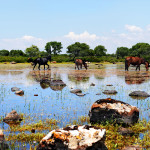 The Giara di Gesturi is a high and steep-sided basaltic plateau which covers almost 45 square kilometers on the highland overlooking the hilly valleys of Marmilla and high Trexenta. The giara was formed some 3 million years ago when lava covered older sedimentary rock. Nowadays in the up-land-flat you can visit a charming natural park with a stunning flora and fauna that for its uniqueness can be found only here. The plateau is home to over 350 plant species, notably the cork oak, and to the majority of the surviving population of the giara horses: the last natural wild horses living in Europe. The park is entirely covered by Mediterranean vegetation and characterized by the plant posture that appears surprisingly inclined to the east because of the insistence of the mistral winds. The entire area is dotted with small pools of water collected in characteristics shallow depressions called paulis, some of which are deep enough to collect water year-round.
The Giara di Gesturi is a high and steep-sided basaltic plateau which covers almost 45 square kilometers on the highland overlooking the hilly valleys of Marmilla and high Trexenta. The giara was formed some 3 million years ago when lava covered older sedimentary rock. Nowadays in the up-land-flat you can visit a charming natural park with a stunning flora and fauna that for its uniqueness can be found only here. The plateau is home to over 350 plant species, notably the cork oak, and to the majority of the surviving population of the giara horses: the last natural wild horses living in Europe. The park is entirely covered by Mediterranean vegetation and characterized by the plant posture that appears surprisingly inclined to the east because of the insistence of the mistral winds. The entire area is dotted with small pools of water collected in characteristics shallow depressions called paulis, some of which are deep enough to collect water year-round.
The Giara Horse (Sardinian: Cuaddeddu de sa Jara, Italian: Cavallino della giara) is a horse-breed native to the island of Sardinia. While of small size due to the hostile environment in which it lives, and sometimes called erroneously “a pony”, it is considered a true horse.
Visit nuraghe su Nuraxi of Barumini
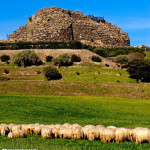 Nuraghes are a charateristic and unique Sardinian megalithic edifice that dot the whole Sardinia with 8000 structures variously preserved. The purpose of Nuraghes is still controversial, most archaeologists assume they were used as religious temples, meeting halls, or military strongholds. These mysterious tower-fortresses, build starting from about the 1800 BC, are the symbol of the Nuragic civilization of Sardinia, lasting from the bronze age to the 2nd century AD.
Nuraghes are a charateristic and unique Sardinian megalithic edifice that dot the whole Sardinia with 8000 structures variously preserved. The purpose of Nuraghes is still controversial, most archaeologists assume they were used as religious temples, meeting halls, or military strongholds. These mysterious tower-fortresses, build starting from about the 1800 BC, are the symbol of the Nuragic civilization of Sardinia, lasting from the bronze age to the 2nd century AD.
The nuragic archeological site of Su Nuraxi of Barumini was included in the UNESCO list of World Heritage Sites in 1997, thanks to the architectural creativity of these ancient artists. The area is open for visitors, and you can see the fortress, while passing in narrow tunnels, which were carved from the walls. The oldest part of Su Nuraxi, the truncated conical central tower, was originally more than 20 meters high, and consists of three overlapping Tholos (typical Nuraghe rooms).
After analyzing an olive tree piece using Carbon-14 dating method, which was found wedged between the huge boulders of basalt that form the structure, it shows that this part of Su Nuraxi dates back to 1478 BC.The four towers surrounding the central bastion, placed in the four cardinal points and originally built on two floors, were presumably built in the thirteenth century BC as well. About two centuries later, the structure was reinforced by adding three extra meters of basalt, making it even harder to enter for unwanted guests.
Visiting a site that was inhabited over 3500 years ago by humans is an emotion in itself but visiting a megalithic tower that was declared a World Heritage Site is a rare and exclusive privilege.
Launeddas private performance
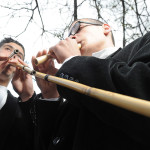 We are proud to let you discover one of the most ancient woodwind instruments of Sardinia simply made out of reed and played with a continuous mouth-blown technique (circular breathing). The most ancient proof of the existence of launeddas in Sardinia is given by the little votive bronze statue called bronzetti dating back to the X c. BC in the nuraghe period. It is a polyphonic instrument made of three pipes. The circular breathing technique allows the musician to play them simultaneously: one of the pipes as a drone while the other two playing the melody.
We are proud to let you discover one of the most ancient woodwind instruments of Sardinia simply made out of reed and played with a continuous mouth-blown technique (circular breathing). The most ancient proof of the existence of launeddas in Sardinia is given by the little votive bronze statue called bronzetti dating back to the X c. BC in the nuraghe period. It is a polyphonic instrument made of three pipes. The circular breathing technique allows the musician to play them simultaneously: one of the pipes as a drone while the other two playing the melody.
